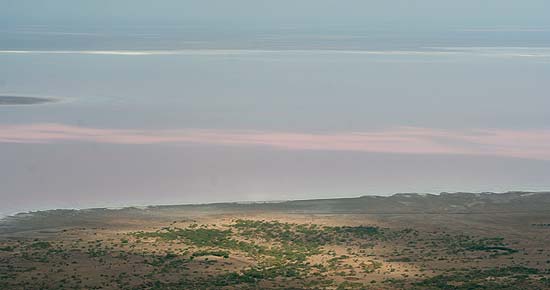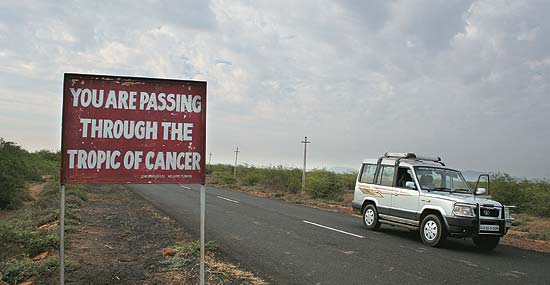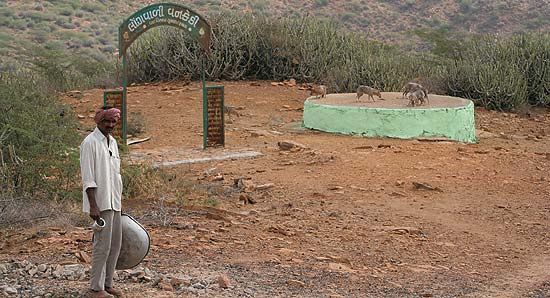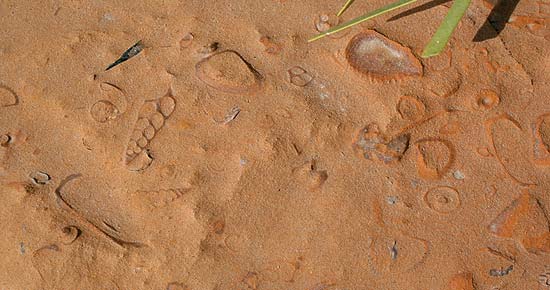If you want any specific stories or the entire update as an attachment, please write to me at psekhsaria@gmail.com
Pankaj Sekhsaria
Editor, 'Protected Area Update'
C/o Kalpavriksh
---
News and Information from protected areas in India and South Asia
Vol. XV No. 6, December 2009 (No.82)
---
LIST OF CONTENTS
EDITORIAL
The day of the dolphin
NEWS FROM INDIAN STATES
ANDAMAN & NICOBAR ISLANDS
ZSI survey in islands of Rani Jhansi Marine NP
ASSAM
Tourism infrastructure enhanced at Pobitara Wildlife Sanctuary
Spate of wildlife deaths in and around Kaziranga National Park
 Human-elephant conflict takes heavy toll along Assam - Bhutan border
Human-elephant conflict takes heavy toll along Assam - Bhutan borderAwards given to Assam FD personnel
Joint committees to monitor transmission lines for elephant safety
Two rhino poachers killed in gun battle in Rajiv Gandhi (Orang) NP
BIHAR
Special efforts to prevent dolphin hunting
GUJARAT
1550 trees to be cut over seven acres of land adjoining Gir WLS
Maldharis insist on living in Gir; memorandum given to President
KERALA
38 casualties in boat tragedy in Periyar TR

‘Orientation Programme on Wildlife Conservation’ for Kerala High Court judges

MAHARASHTRA
Opposition to religious gathering within Bhimashankar WLS
Trees over 50 hectares to be cut in the Great Indian Bustard WLS
 Conservation Reserve status proposed for Mahendri Reserve Forest
Conservation Reserve status proposed for Mahendri Reserve ForestMEGHALAYA
Community reserve for pitcher plant conservation in South Garo Hills

NAGALAND
Singphan RF declared as Singphan WLS
ORISSA
Oil spill concerns for Gahirmatha
SC notice against Dhamra port
 Orissa to constitute State Wetland Management Authority; Integrated -Management Plan for Chilika Lake
Orissa to constitute State Wetland Management Authority; Integrated -Management Plan for Chilika LakeOrissa may take the help of traditional elephant catchers from Assam to mitigate man-elephant conflict

RAJASTHAN
Rs 104 crores for relocation of villages from Ranthambhore TR
Great Indian Bustard sighted in Barmer part of Desert NP after 25 years
TAMIL NADU
MoEF says no to neutrino project proposed in Nilgiri BR
UTTAR PRADESH
UP plans to protect Gangetic Dolphin
2nd phase of rhino introduction planned in Dudhwa TR
WEST BENGAL
Concrete embankments proposed to protect Sunderbans

Two rhinos deaths in Jaldapara WLS; elephant safari stopped
NATIONAL NEWS FROM INDIA
Gangetic Dolphin is National Aquatic Animal
Centre approves cheetah reintroduction roadmap preparation

Ecotone – New newsletter on wildlife and conservation in North East India
Endangered species list under the Biological Diversity Act
National Tiger Conservation Authority reconstituted
NTCA to issue identity cards for tigers; also to use new tool ‘payment of ecosystem services’ for conservation
Zoological Survey of India activities related to protected areas
SOUTH ASIA
NEPAL
Nepal Army gears up for anti-poaching drive
INTERNATIONAL NEWS
Tiger population falls in Myanmar’s Hukuang Tiger Reserve
OPPORTUNITIES
CEPF Call for Proposals for Western Ghats
PROTECTED AREAS IN THE COUNTRY: LATEST NUMBERS
AWARDEES - CMS VATAVARAN ENVIRONMENTAL FILM FESTIVAL - 2009
UPCOMING
National meeting of the Association for Tropical Biology and Conservation (ATBC)
IN THE SUPREME COURT
--------
THE DAY OF THE DOLPHIN
It is ironic that a civilisation that is so dependant, indeed nourished by its rivers is so callous to their plight today. There is hardly any river in the country now, whose natural flow has not been altered by dams and barrages or which has not become a carrier of our municipal and industrial waste. The waters that have been the source of life and nourishment for centuries are, now, almost dead themselves. Needless to say, the fate of the dolphins and a multitude of plant and animal life that depends on these systems is fated to meet the same end. That they are not seen often has not helped matters worse. ‘Out of sight’, in this case, has clearly been a case of ‘out of mind’.
Little, for instance, is known of the biology or even the number of the Gangetic dolphins that survive today. The most optimistic estimates put their number at about 2000, spread over rivers in the Gangetic basin and in the Brahmaputra river system.
The new status of the animal will hopefully change the present situation and if some reports in this issue of the Protected Area Update are some indication, this is already beginning to happen. The states of Bihar and Uttar Pradesh have almost immediately expressed their intentions (and in some case also taken steps) for dolphin protection and conservation. A further interest in the dolphin has also been spurred in Assam, where the creature has already been the state aquatic animal for over a year now.
What will be crucial is how the intentions are operationalised on the ground, or for that matter in the water. It needs to be borne in mind that some ‘band-aid’ kind of suggestions and solutions (arrest fisherfolk, awareness programs in schools etc) alone will simply not work. The status and fate of our rivers are symptomatic of deep and underlying problems with our development process where damming of rivers, chemicalisation of our agriculture, rapid industrialization and urbanization have been given priority over everything else. More than 168 large dams, for instance, have been planned in the Brahmaputra river basin alone, with little realization that this will change the entire ecological system and adversely impact the dolphin. It is precisely these kinds of developments that are working as a noose around our rivers and the diverse life found in them.
If the dolphin must have it’s day, it is this process that needs a fundamental and serious re-engagement and re-structuring; otherwise declarations that accord national status will amount to nothing more than symbolic lip service. And that as well all know, is not going to achieve anything at all.
---
Protected Area Update
Vol. XV, No. 6, December 2009 (No. 82)
Editor: Pankaj Sekhsaria
Editorial Assistance: Reshma Jathar
Illustrations: Madhuvanti Anantharajan
Produced by: Kalpavriksh
Ideas, comments, news and information may please be sent to the editorial address:
KALPAVRIKSH
Apartment 5, Shri Dutta Krupa, 908 Deccan Gymkhana, Pune 411004, Maharashtra, India.
Tel/Fax: 020 – 25654239.
Email: psekhsaria@gmail.com
Website: www.kalpavriksh.org
---
PUBLICATION OF THE PA Update has been supported by
-Foundation for Ecological Security (FES)
http://fes.org.in/
-Duleep Mathai Nature Conservation Trust
C/o FES
-Greenpeace India
www.greenpeace.org/india/
-Royal Society for the Protection of Birds
www.rspb.org.uk/
-Indian Bird Conservation Network
http://www.ibcn.in/
---
Information has been sourced from different newspapers and the following websites
http://wildlifewatch.in/
http://www.cmsindia.org/cms/sector/cmsenvis.html
http://indiaenvironmentportal.org.in







